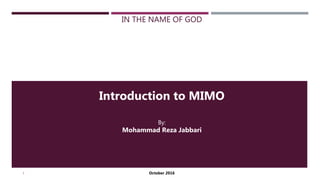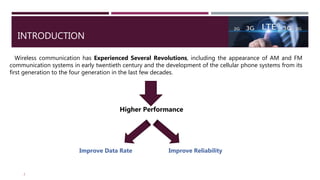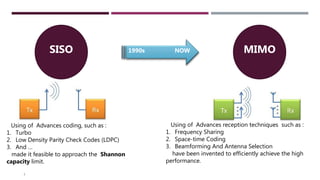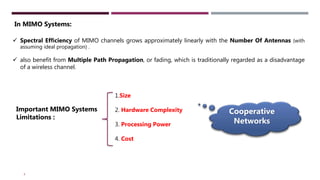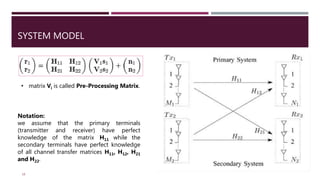1) The document introduces MIMO (multiple-input multiple-output) wireless communication systems and discusses their advantages over traditional SISO systems, including higher spectral efficiency and ability to benefit from multipath propagation.
2) It describes the MIMO channel model and derives the capacity of MIMO systems using singular value decomposition and water-filling principles. MIMO capacity is shown to increase approximately linearly with the number of antennas.
3) Cooperative communication techniques that enable single-antenna devices to achieve MIMO-like benefits are introduced, along with the concepts of cognitive radio networks and spectrum pooling.
